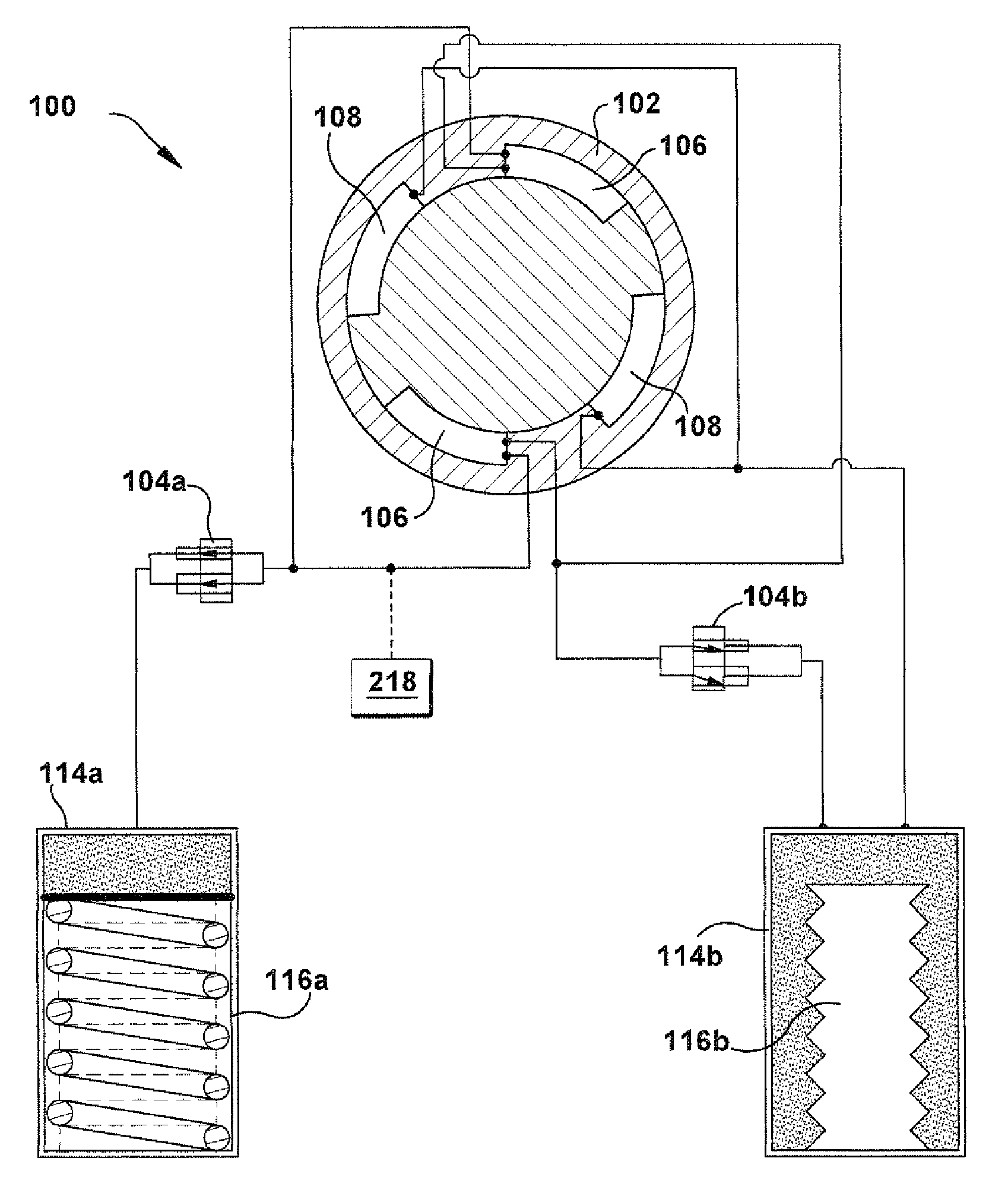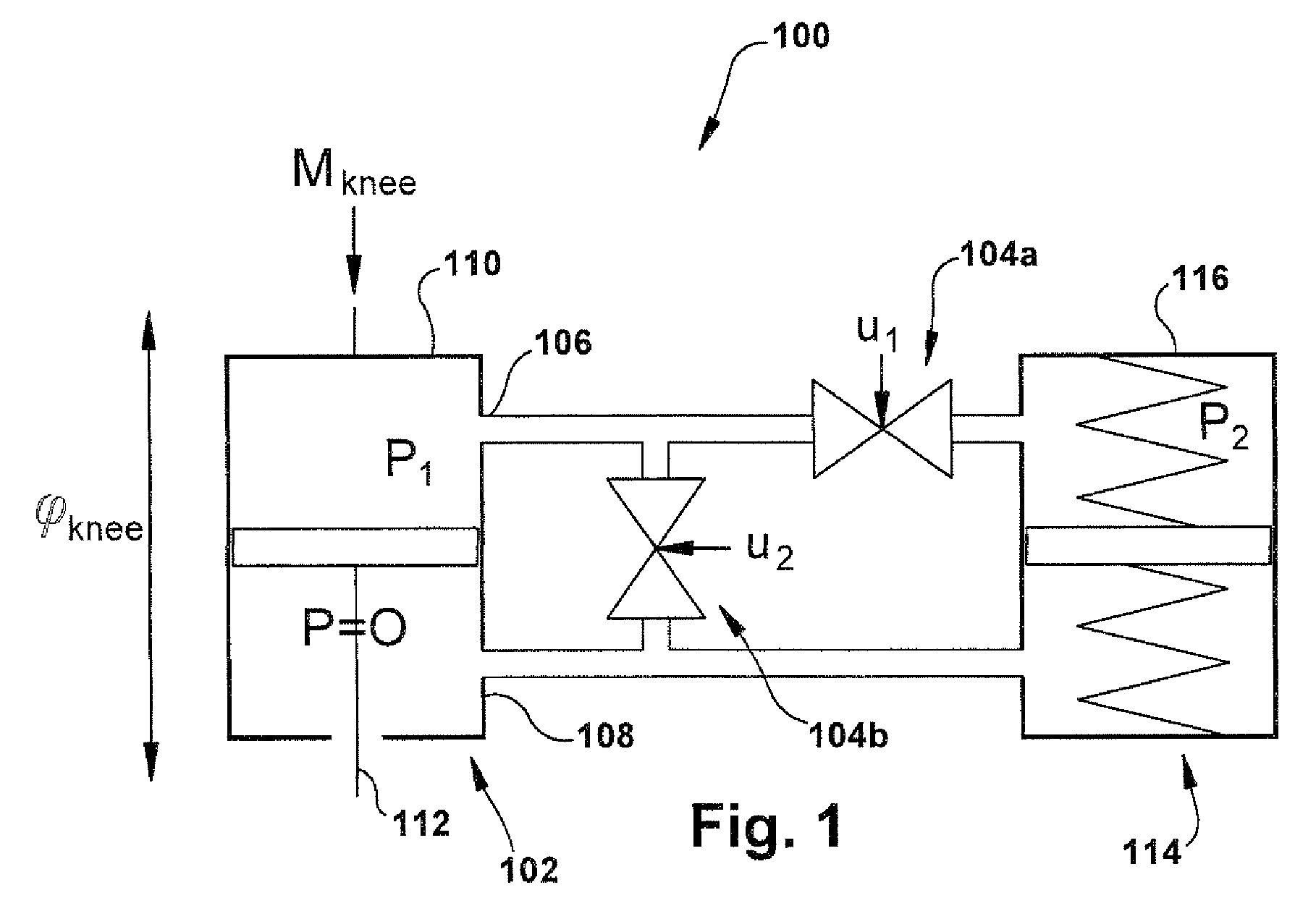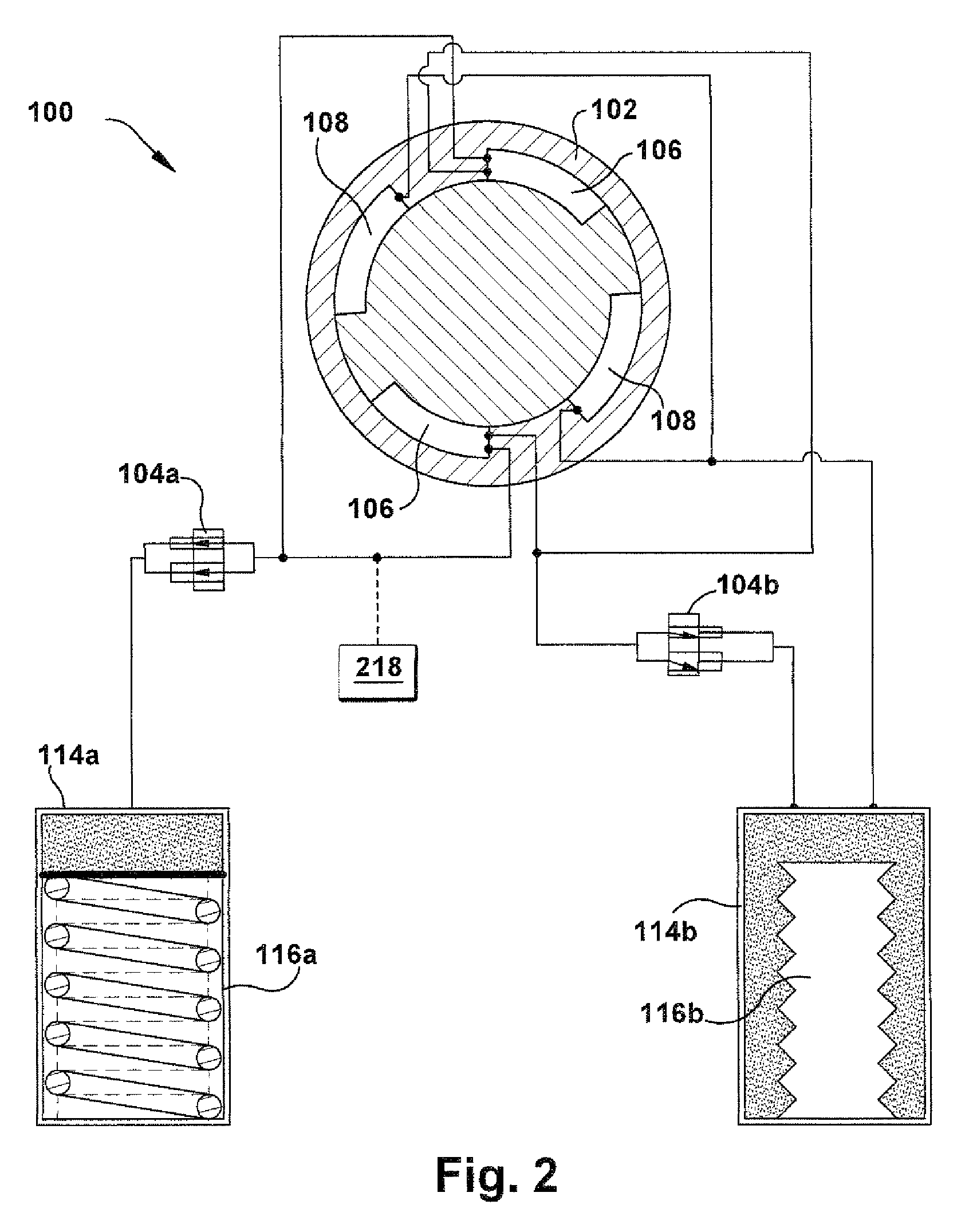Modeling and desired control of an energy-storing prosthetic knee
a technology of prosthetic knees and knees, applied in the field of applicability and method of use of a prosthetic knee, can solve the problems of overuse injuries and osteoarthritis, limbs that are not quite compliant, and the energy cost of walking is 30-50% higher in unilateral transfemoral amputees than in able-bodied peopl
- Summary
- Abstract
- Description
- Claims
- Application Information
AI Technical Summary
Benefits of technology
Problems solved by technology
Method used
Image
Examples
Embodiment Construction
[0026]In accordance with the present invention, FIG. 1 schematically depicts a portion of an apparatus for asserting a transfemoral amputee with lower limb-involving user tasks. Here, the apparatus includes an energy-storing prosthetic knee 100, which stores energy during times of negative power in the amputee's gait cycle (characterized by a plurality of gait periods) and releases the energy as positive power to assist at a later time in the gait cycle. The operation and configuration of the prosthetic knee 100 will be described herein as being fluid-powered (e.g., hydraulic and / or pneumatic), but any suitable power scheme (e.g., electric, mechanical, spring-powered, rheological, or any other suitable type) could be used for a particular application of the present invention.
[0027]The prosthetic knee 100 includes at least one actuator 102, controlled by at least two controllable variable fluid flow resisting devices, shown and described herein as fluid valves 104a and 104b. The valv...
PUM
 Login to View More
Login to View More Abstract
Description
Claims
Application Information
 Login to View More
Login to View More - R&D
- Intellectual Property
- Life Sciences
- Materials
- Tech Scout
- Unparalleled Data Quality
- Higher Quality Content
- 60% Fewer Hallucinations
Browse by: Latest US Patents, China's latest patents, Technical Efficacy Thesaurus, Application Domain, Technology Topic, Popular Technical Reports.
© 2025 PatSnap. All rights reserved.Legal|Privacy policy|Modern Slavery Act Transparency Statement|Sitemap|About US| Contact US: help@patsnap.com



